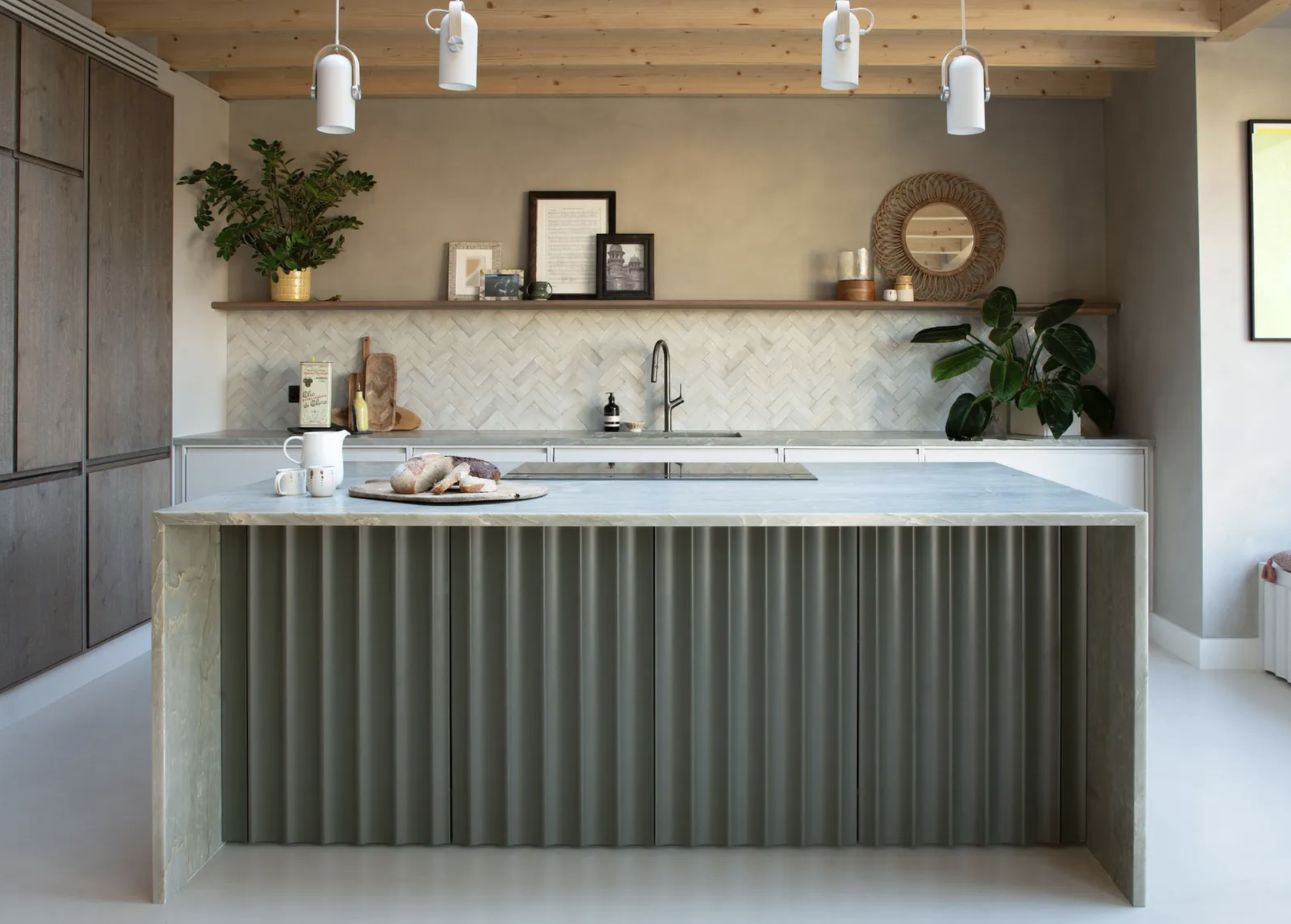Main Content
Blog
Blog Details
Top Outdated Kitchen Island Trends to Avoid According to Experts
It’s a fact that we love our kitchen islands, and we can’t imagine people ever getting sick of such a popular centerpiece. But that’s not to say that kitchen island ideas are immune to the rise and fall of trends. Like most aspects of the interior design world, today, there are some definite dos and don’ts if you want your kitchen island style to look fresh, innovative, and chic. So while kitchen islands have staying power, some kitchen island designs can date your space. But which trends now seem a little old-fashioned? And what should you be doing instead?

THE OVERSIZED MONOLITH
Do Instead: Don’t let your kitchen island dominate the space.
Kitchen islands are pretty timeless, but don’t be tempted to oversize your island, as this can really date your room and dominate the entire kitchen. “A huge block of cabinetry in the middle of the kitchen used to feel luxurious and elegant,” says Simon Ribchester at Beams. “But it can feel heavy, take up too much space, and interrupt flow.” In its place, the experts champion a more proportionate island that has good storage and work surface space, enhances efficiency and encourages social interaction, but doesn’t overwhelm the room. Simon is all for a slimmer, more purposeful island with space to move around it easily. “Add elements like open shelving and breakfast bars to break up the block of cabinetry and make the island feel less heavy. Islands on legs can help to reveal more of the floor area to increase the sense of space.”

SINK AND HOB OVERLOAD
Do Instead: Avoid cramming too much into your island!
A sink or a hob on an island can be a great use of space. But the trend for chucking as much as you can into your island is a definite no-no, according to the designers. “Trying to cram everything – sink, hob, seating – into the island makes it feel busy and often leaves little usable or valuable multifunctional worktop space,” says Simon at Beams. “What we’d do instead is decide on the island’s main role: prep, cook, or social. Then design around that. If you’re cooking, include breathing room around the hob; if it’s a hangout zone, keep it clear and clutter-free.” “I’d avoid placing the main sink on the island,” adds Lizzie at Makers Furniture, “as it tends to turn the space into more of a cleaning station and can easily become cluttered – but that’s just a personal preference!”

MATCHING COLOR
Do Instead: Create contrast by painting your kitchen island in a different color.
Kitchen islands that match the main cabinetry in the exact same color can feel like an afterthought and make the kitchen feel flat, predictable, and uninspired – and it’s something the experts are steering clear of. “A kitchen island is a multifunctional piece that should provide both extra work space and storage while also enhancing your design scheme,” explains Al Bruce, founder of Olive & Barr. “We are seeing homeowners move away from islands that exactly match their kitchen cabinetry and look to incorporate a kitchen island that adds contrast, character, and flexibility.” Designers recommend introducing mixed materials or a different paint shade to create a kitchen with layers and contrast. “Use the island to add contrast, whether that’s with a different worktop, a tonal color shift, or a new texture like timber or concrete,” adds Simon Ribchester. “It anchors the space and makes it feel considered. It also helps the island tie in with more elements around the house, bringing everything together nicely.”

IDENTICAL HANDLES AND HARDWARE
Do Instead: Don’t be afraid to choose different handles for your island.
Mix and match kitchen handles and hardware are the way forward for a layered, considered look. So stay away from only cups or only knobs that can look overly stylized and uninteresting. “As a design trend for kitchen islands, we’re seeing a movement away from the idea that hardware should be uniform across the whole kitchen, particularly when it comes to the island,” says Gareth Hull, design lead at Hendel & Hendel. “That sense of repetition used to be a go-to for cohesion, but homeowners want to personalize. More and more, we’re working with designers and clients who want the island to feel distinct, not just in terms of cabinetry or material, but in the hardware too.”
Text by Lara Sargent | Photo credits on livingetc.com | Read More Here



Login With
Or Sign Up With Disqus